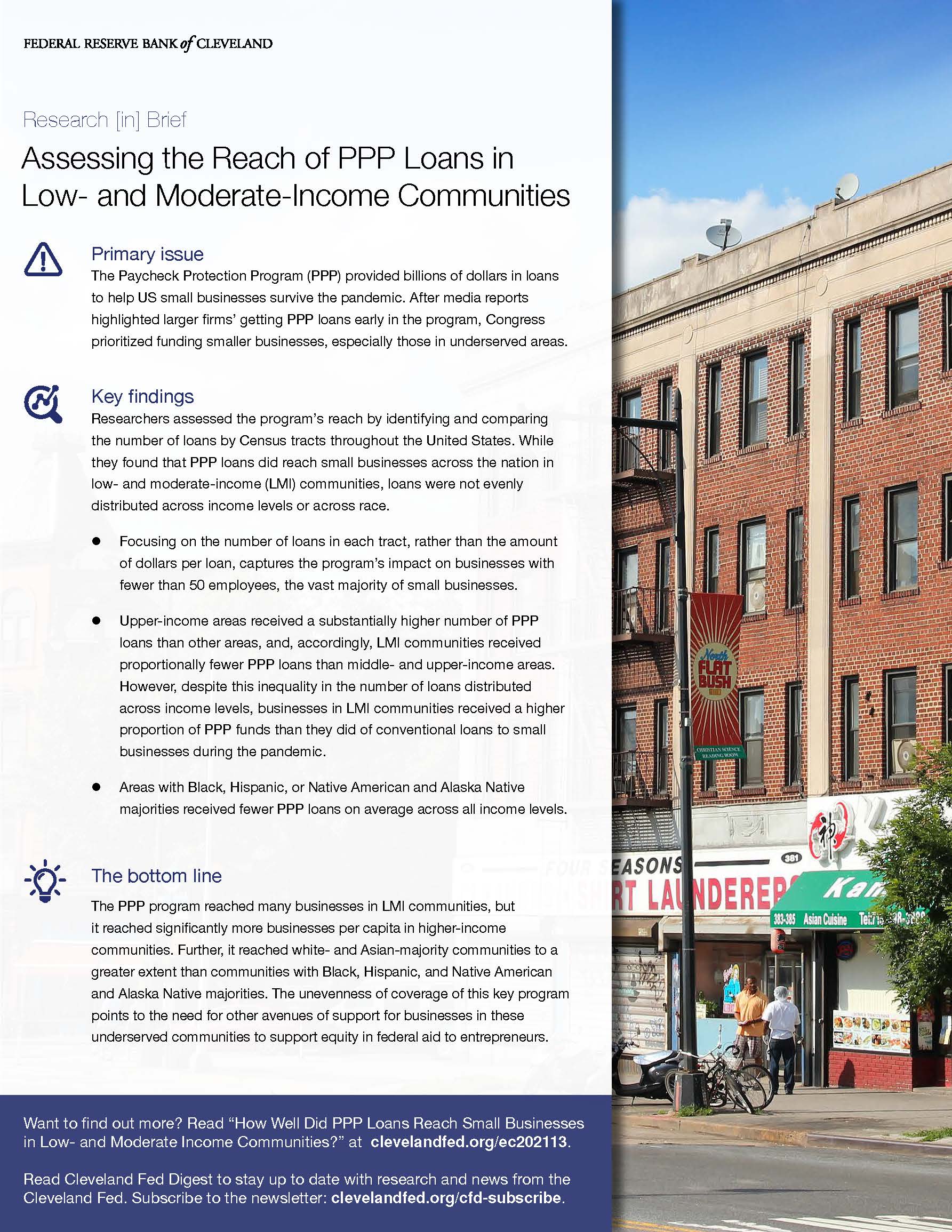- Share
Research [in] Brief: Assessing the Reach of PPP Loans in Low- and Moderate-Income Communities
Infographic

Full text
Primary issue
The Paycheck Protection Program (PPP) provided billions of dollars in loans to help US small businesses survive the pandemic. After media reports highlighted larger firms’ getting PPP loans early in the program, Congress prioritized funding smaller businesses, especially those in underserved areas.
Key findings
Researchers assessed the program’s reach by identifying and comparing the number of loans by Census tracts throughout the United States. While they found that PPP loans did reach small businesses across the nation in low- and moderate-income (LMI) communities, loans were not evenly distributed across income levels or across race.
- Focusing on the number of loans in each tract, rather than the amount of dollars per loan, captures the program’s impact on businesses with fewer than 50 employees, the vast majority of small businesses.
- Upper-income areas received a substantially higher number of PPP loans than other areas, and, accordingly, LMI communities received proportionally fewer PPP loans than middle- and upper-income areas. However, despite this inequality in the number of loans distributed across income levels, businesses in LMI communities received a higher proportion of PPP funds than they did of conventional loans to small businesses during the pandemic.
- Areas with Black, Hispanic, or Native American and Alaska Native majorities received fewer PPP loans on average across all income levels.
The bottom line
The PPP program reached many businesses in LMI communities, but it reached significantly more businesses per capita in higher-income communities. Further, it reached white- and Asian-majority communities to a greater extent than communities with Black, Hispanic, and Native American and Alaska Native majorities. The unevenness of coverage of this key program points to the need for other avenues of support for businesses in these underserved communities to support equity in federal aid to entrepreneurs.
Want to find out more? Read “How Well Did PPP Loans Reach Small Businesses in Low- and Moderate Income Communities?” at clevelandfed.org/ec202113.
Related resources
How Well Did PPP Loans Reach Low- and Moderate-Income Communities?
We investigate the degree to which Paycheck Protection Program (PPP) loans reached small businesses in low- and moderate-income (LMI) communities. We find evidence that the program did have a broad reach within LMI communities, but that it reached higher-income communities to a greater extent and areas with Black, Hispanic, and American Indian or Alaska Native majorities to a lesser extent.

